Jean Home: Turkish Costume in Georgian Britain
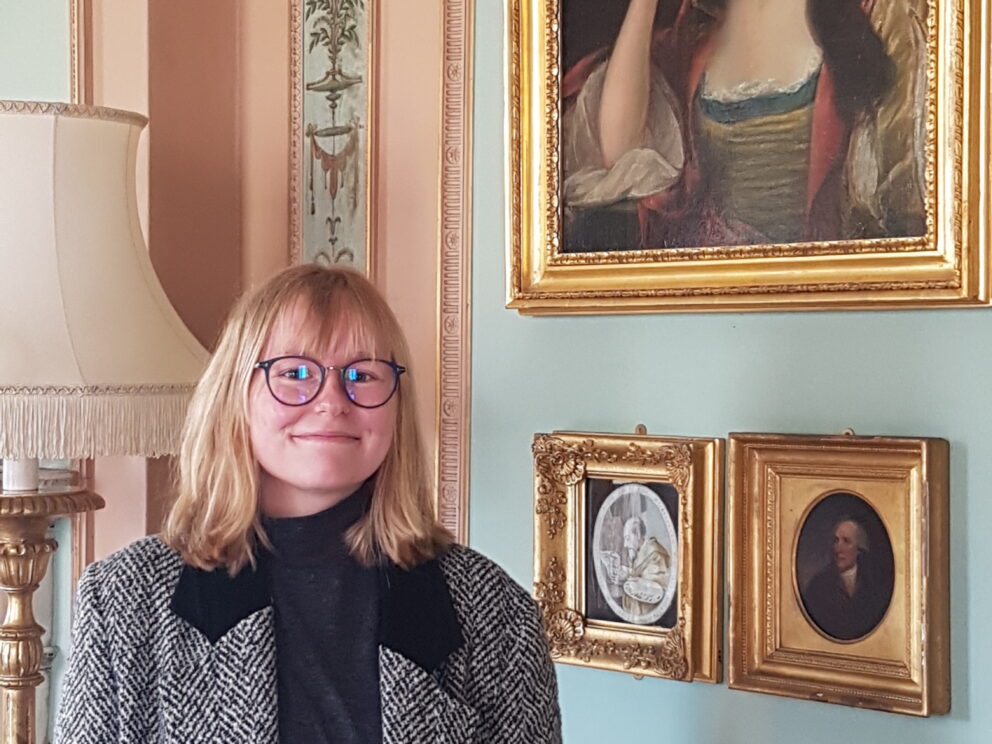
Aurore Damoiseaux, a postgraduate student at the University of Glasgow in MLitt History of Art: Dress and Textile Histories, discusses a portrait of Jean Home.
JEAN HOME: TURKISH COSTUME IN GEORGIAN BRITAIN
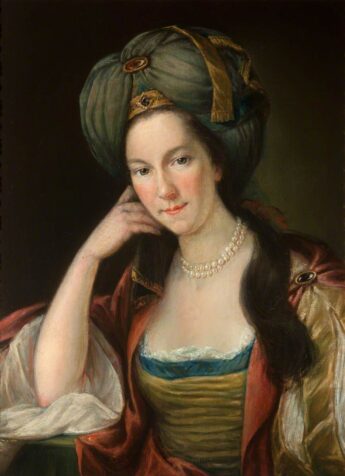 Jean Home of Wedderburn by David Martin
Jean Home of Wedderburn by David Martin
In David Martin ’s painting of Jean Home of Wedderburn (1734-1812), Patrick Home’s sister, the sitter is depicted wearing a bejewelled blue-green turban with a gold tassel. A long lock of hair is loosely flowing over her left shoulder. Her lace-trimmed gown seems fitted but not constricting; she appears to not be wearing stays (the eighteenth-century equivalent of a corset). The yellow fabric of her sleeves is slashed, revealing light white fabric underneath. The red garment she wears over her dress is possibly an anglicised version of a kurdi, a fur-trimmed robe originating in Turkey.
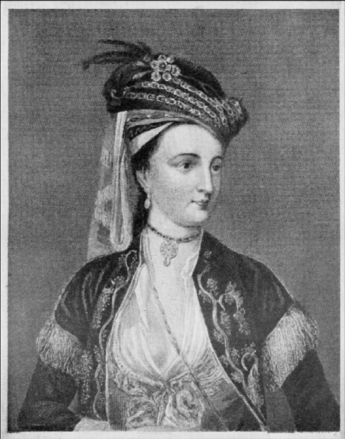 Engraved portrait of Lady Mary Wortley Montagu
Engraved portrait of Lady Mary Wortley Montagu
The detailed descriptions of Turkish dress in the letters of Lady Mary Wortley Montagu, wife of the British ambassador in Istanbul, published in 1763, played an important role in the popularisation of turquerie in Britain. This British interest for the ways of life of the Ottoman court paralleled the growth of the British empire and its mercantile trade with Asia and the Middle East during the eighteenth century. An engraving of Lady Mary Wortley Montagu wearing Ottoman court dress from circa 1720, (above) depicts her with a similar bodice to the one worn by Jean Home, but with long sleeves, tight at the upper-arm and widening towards the wrist.
Turkish dress worn in Britain was not an exact replica of contemporary Turkish fashion, indeed the popularity of these garments actually stemmed from their ‘otherness’, which was associated with sensuality and eroticism. Jean Home’s posture shows her composed and retaining a sense of respectability and correctness. However, her hand gesture and bare arm in the foreground remind the viewer that she is in informal dress, relaxed, in a garment that is free flowing and worn without stays. The informality of the garment adds to the intimacy of the portrait.
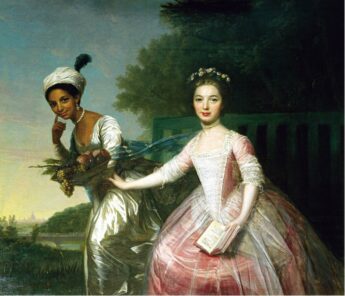
Dido Belle & Lady Elizabeth Murray by David Martin © Scone Palace
Was this a real garment that Jean Home could have worn on a day-to-day basis? The answer is probably not. There was quite a fashion for posing for a portrait in a dress that differed from the contemporary trends in the eighteenth century, as styles would fade with time and this would prevent the painting from appearing dated. Jean Home is not the only woman who David Martin represented in an ‘exotic’ style of dress. In the Portrait of Dido Elizabeth Belle Lindsay and Lady Elizabeth Murray (1778), Dido Belle is shown wearing a turban and a nightgown, the feminine equivalent of a banyan (dressing gown). This garment would have been worn at home and was considered ‘undress’. These portraits could be evidence that the garments worn by Jean Home were an artistic choice made by the painter rather the sitter. It is possible that the painting was commissioned by Patrick Home, whose worldiness, acquired from two Grand Tours and a successful career as a lawyer and MP, could have made him discover ‘exotic’ fashions and wish follow the latest sartorial trends.
Taken from the research report by Aurore Damoiseaux, September 2021
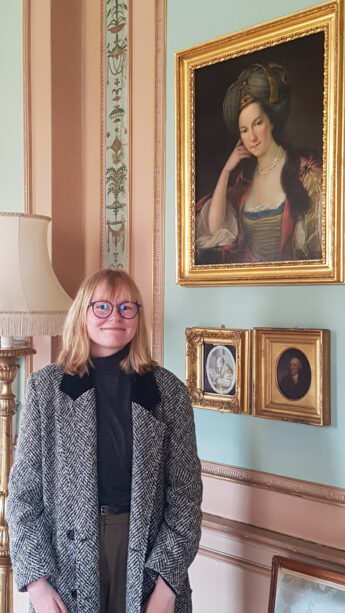 Aurore Damoiseaux is a postgraduate student at the University of Glasgow in MLitt History of Art: Dress and Textile Histories. She holds a Masters of Arts in History of Art from the University of Aberdeen. Aurore is particularly interested in using garments as a way to find out about the everyday life of people in the eighteenth and nineteenth centuries, as well as the use of clothing as public representation of the personal identity of the wearer.
Aurore Damoiseaux is a postgraduate student at the University of Glasgow in MLitt History of Art: Dress and Textile Histories. She holds a Masters of Arts in History of Art from the University of Aberdeen. Aurore is particularly interested in using garments as a way to find out about the everyday life of people in the eighteenth and nineteenth centuries, as well as the use of clothing as public representation of the personal identity of the wearer.